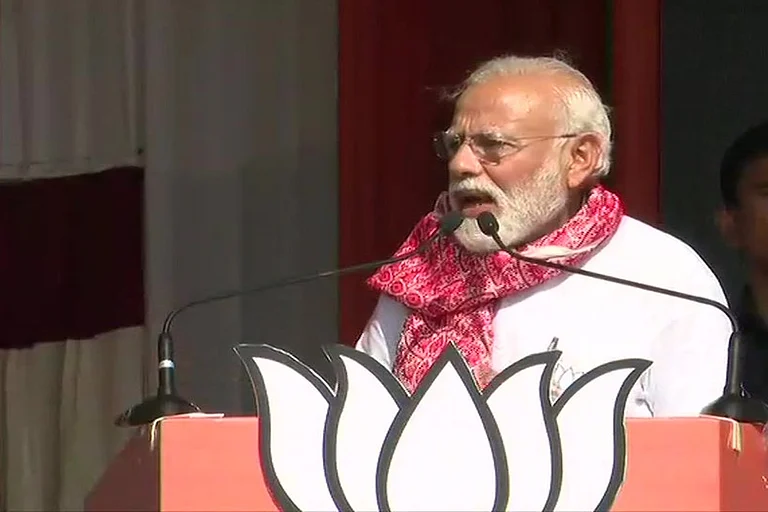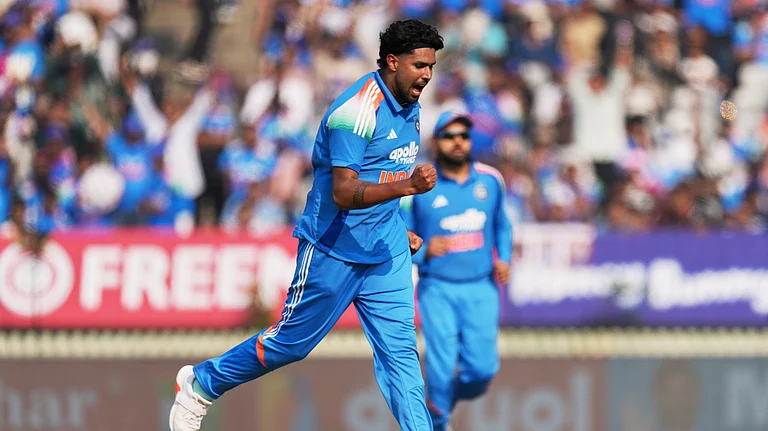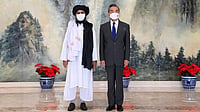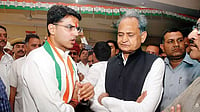Ever since the Congress party was relegated to opposition benches nearly a decade back by the Modi juggernaut, the grand old party has been accused of not pulling its weight as the country’s primary opposition party. However, the year 2022 turned out to be a very crucial one, as the party is on an arduous journey toward its resurgence.
For the party, it was a year of debunking the perception that has been built over time, since 2014, by the large section of the media and amplified by the Bharatiya Janata Party’s drumbeating— although Congress’ own infirmities allowed this to fester.
Though late, Congress woke up from a deep slumber in 2022. It all began with the party’s ‘satyagraha-style’ protests after the Enforcement Directorate, in July, started pressing hard against the Gandhi clan in the National Herald money laundering case. The grand old party hit the streets across the country in protest against what its leaders kept alleging as “misuse” of central government agencies to silence and sideline the opposition and critics. Dozens of Congress leaders, including Rahul Gandhi, were detained. For the first time in recent past years, Congress— being the country’s biggest opposition party— was seen where it ought to have always been: on the streets, protesting. Even though the party’s critics called out the satyagraha protests saying that the party was out on the roads not to protect the nation, but the fortunes of the Gandhi family, as ED’s threat loomed over.
In late August, came the scathing resignation letter of the senior leader Ghulam Nabi Azad, another blow to the party that has been sustaining a spate of high-profile defections and desertions. Azad, in his charged letter, alleged that the party organisation is in shambles, chi¬efly because a “new coterie of inexperienced sycophants had started running the affairs” of the party at 24, Akbar Road.
“Indian National Congress,” wrote Azad, “has lost both the will and the ability under the tutelage of the coterie that runs the AICC to fight for what is right for India.” Azad went on to say that before starting Bharat Jodo Yatra the leadership ought to have undertaken a “Congress Jodo exercise across the country.”
Nevertheless, undeterred by a sea of ominous developments, Rahul Gandhi took to the roads on September 7th, and kicked off a 2200 miles long footmarch to unite the country against the “divisive forces and hatred perpetrated by the ruling BJP.” Bharat Jodo Yatra completed its 100 days in December, and although it did receive an overwhelming response, it remains to be seen whether Gandhi’s long walk will bring him electoral glory.
Based in New Delhi, Political scientist and author Zoya Hasan tells Outlook that the yatra is an extremely important mass movement for Congress. “Whether it will bring Congress any electoral dividends or not, that is a separate question,” she says.
“For long there was a question, ‘Where is Congress’? Now that they are on the roads, we are asking will this translate into votes, will it win the elections? The question, though important, is not relevant for assessing the effectiveness of the yatra, which is a mass outreach programme that has stirred up hopes beyond the traditional support base of the Congress,” says Hasan.
She adds, “The issue is whether or not the yatra will eventually lead to a revival of the Congress party and a push-back against divisive politics and the slide into authoritarianism.”
In the middle of the Bharat Jodo Yatra, the Gandhi family chose Ashok Gehlot as their presidential candidate and he was asked to step down from his chief ministerial chair because “one person cannot hold two posts.” And before the Congress presidential elections, Ashok Gehlot fell out with the high command after pulling off a power show in Rajasthan, when dozens of his MLAs tendered resignations, subtly sending a signal to Gandhis that he was not ready to give in to the conditions of the high command, including the decision of choosing the new chief ministerial face in Rajasthan before the presidential elections itself. Gehlot’s maneuvers, disapproved by the high command, widened his rift with Sachin Pilot— a wound, still unattended, in the Rajasthan Congress as the state goes to polls this year.
Mallikarjun Kharge, a veteran Dalit leader, became the first non-Gandhi president of the party in 24 years. Despite Kharge’s political acumen and stature, political observers ask one question in unison: will the new president get a free hand to run the Congress?
For Congress, 2022 was a bumpy ride with crests and troughs, the lowest blow being losing the Gujarat state elections, Prime Minister Narendra Modi’s bastion. Losing the election was not the worst news for Congress coming from Gujarat. It was rather Aam Aadmi Party’s attempt to make inroads into the state, putting up a formidable competition and weaning off a huge chunk of voters from Congress’ base.
Hurdles Ahead In 2023
Congress, losing its electoral sheen since the 2014 parliamentary elections. From leading governments in India’s nine states during the 2014 polls, their fortunes have plummeted to just three—Chhattisgarh, Rajasthan, and the recently-won Himachal.
In early December, Indian National Congress won the state assembly polls in Himachal Pradesh, and it was a moment of respite for the party because since the 2019 debacle in the Parliamentary elections, it had not won a majority in a single state assembly election on its own. Although on the same day, Congress lost Gujarat to Modi’s BJP, a state that is roughly four times bigger than Himachal, the party headquarters in the capital city of New Delhi chose to celebrate the win and not grieve the Gujarat loss. Nevertheless, statistics from the Gujarat polls pose a serious challenge to Congress.
In the 2017 assembly polls, Congress’ vote share in Gujarat was 41.4 per cent, and that of the BJP was 49.1 per cent respectively. However, in 2022 polls, Congress’ vote share has gone down to nearly 27.3 per cent, while BJP’s share of votes jumps to 52 per cent. Aam Aadmi Party’s vote share, which was 0.1 per cent in 2017, has jumped to 13 per cent. This is a sign of worry, as the numbers suggest that the percentage of votes that Congress is losing is roughly the same as that the AAP is gaining. AAP also threw the erstwhile ruling congress government out of power, its formidable rise as a party and establishing itself as a fresh alternative for Indians should be a worry for Congress, because not only does the grand old party need to reclaim its voter base, but to revive its fortunes, it also has to make sure that it does not lose votes to parties like AAP in prospect.
To keep its ship afloat in the electoral politics of the country, the Congress needs to win elections, and even though the Bharat Jodo Yatra is just a ‘small and important’ step in the long journey that the party has to endure, and that the yatra is making Rahul Gandhi the biggest beneficiary— Rahul is now more popular, and his image as a gullible-fellow (Pappu) does not float in the headlines anymore. But Rahul can not single-handedly revive the party.
In 2023, Congress is eying to win key elections in states like Karnataka and Madhya Pradesh where the party also expects to ride on an anti-incumbency wave against the BJP. Moreover, in Rajasthan the party seeks to retain the power, but before that the party high command has to douse the factional fire between Gehlot and Pilot, and decide on a Chief Ministerial candidate without risking repeating how things turned out in Punjab where Captain Amarinder Singh was given an unceremonious exit.
Ahead of the 2024 Lok Sabha elections, Congress needs to implement the structural changes at the All India Congress Committee AICC level quickly. Congress workers and functionaries, especially those who hail from the yatra-bound states, are happy to see the churn and signs of rejuvenation within the party, and several leaders within the party believe that it is high time that congress makes changes in the party structure as sooner as possible, lest Rahul’s yatra wave dies down.
To reap the benefits of the yatra at a much bigger scale believes Christopher Tilak, the All India Congress Committee secretary, organisational changes should quickly be made. “Rahul Gandhi’s march is making it rain for Congress,” says Tilak. “But to harvest the water, we need containers. Timely organisational changes will give us the containers.”
Tilak believes that the AICC needs to take a human-resource and cadre-based approach while inducting new people into the party cadres and that the party functionaries who have not been delivering should be shown the way out. “People who have worked very hard in the party, and are ideologically committed to it deserve to be given bigger responsibilities.”
According to Tilak, the structural changes should trickle down from the top— from the AICC level, and not vice versa. “Once AICC has sturdy formation, the newly appointed functionaries will scout for workers for their respective state units, and then the state level functionaries will focus on district units and other block levels, and so on.”
The reforms necessarily, he says, need to happen at the top first. “And then,” quips Tilak, “the change will trickle down to smaller units, consolidating the ground for the party.”
Congress, believe many political observers, needs also to align its focus on the ideological reformation, as the grand old party can and should not rely on the ideological ethos offered by BJP or the AAP.
“The Congress party’s foremost task,” writes Zoya Hasan, “is to build a political narrative that has traction with the electorate. As a big-tent party, Congress has tried to present a political template of pluralism, diversity, and accommodation.”
“But,” she adds, “there are few takers for pluralism in political times as fevered as these, making an effective rebuttal of majoritarian politics and Hindu nationalism a big challenge.”
As the 2024 elections are around the corner, the grand old party must be eying to project its ideological position more clearly and consistently to take on the BJP. “But,” writes Hassan, “that will not happen unless the party offers voters a ‘new deal’ with inclusive and equitable rights-based programmes as its high watermark.”
In early 2023, Congress will move out of 24, Akbar Road as a new office is waiting for them at the Deen Dayal Upadhyay Marg, which is close to the BJP’s national headquarters. And with the new year, and the new office, Congress’ ride in 2023 will be fraught with crucial challenges, and whether or not it tackles them timely and diligently, shall decide their political prospects in this country over the coming decade.

























